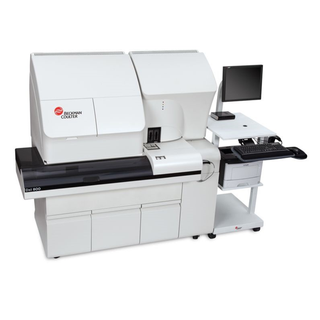

The sample was re-analyzed on the same instrument and recovered an accutni result of 0. It is not documented if any clots were found. On (b)(6), 2012, beckman coulter advised the customer to freeze the original sample collected on (b)(6), 2012 and check for fibrin clots upon thawing.Īfter thawing, the customer centrifuged the sample and examined for clots. Therefore, sample integrity (fibrin or debris) and sample clotting (visual inspection) were probably not performed.ĥ1 ng/ml, the patient was administered a clot-busting medication.

" the customer stated the sample was analyzed from the automation line. Patients with abnormal clotting due to disease, or those receiving anticoagulant therapy require more time for complete clot formation. The becton dickinson vacutainer evacuated blood collection system instructions for use recommends minimum clotting time of 30 minutes and states that "recommended times are based upon an intact clotting process. There was no documentation regarding clot time and since the patient was on anti-coagulant medication, it is likely the serum would not have formed a clot at the time of sample analysis. On (b)(6), 2012, the patient's sample was collected. The patient was on circulating anti-coagulant (heparin) medication.Īt the time, there was no documentation of why the accutni test was requested. The patient was hospitalized prior to the sample being drawn for troponin i (accutni) analysis. This medwatch report is related to mdr 2122870-2012-00531.Īdditional manufacturer narrative: the patient was being treated for renal issues. There is no indication that the customer had obtained any previous troponin i results for this patient or if there were any delta checks in place. The affiliate was unable to determine why the patient had a troponin i (accutni) test performed as part of his admittance to the hospital for the surgery. The customer noted thirteen other troponin i samples were retested and recovered comparable values to the original results. The customer stated a routine system check, performed after the event, on (b)(6) 2012, passed within system specifications. The customer stated troponin i (accutni) quality control (qc) had been performing within the laboratory's established ranges.

Immediately following the second obstruction error, the system stopped analyzing samples due to z-axis motion error and a device error at 20:38.

The customer received the erroneous result at 20:30.Ī second obstruction error was obtained at 20:37. The customer obtained an obstruction error at 19:35. In conclusion, pre-analytical sample issues are the likely cause of this event. The customer believes pre-analytical factors are the cause of the erroneous result.
#Dxi beckman coulter how to
Recommendations were given to the customer on how to reduce pre-analytical related issues. The customer did not have a sample quality check protocol in place at the time of the event. The sample was processed on a track system and centrifuged for four minutes at 1,200g (relative centrifugal force) instead of ten minutes as recommended by becton dickinson (bd).Īdvised the customer to consider increasing the centrifugation time. The sample was two hours old and stored at room temperature. The customer indicated the patient sample was in serum tubes which are then processed in 7ml becton dickinson sst (serum separation tube) with gel separator and analyzed on the automation line per beckman coulter recommendations. The unit conformed to the manufacturer's published performance specifications. The fse did not note any hardware issues associated with this event. The fse noted routine system check results were within specification.
#Dxi beckman coulter verification
The field service engineer (fse) serviced the unit on (b)(4) 2012 and performed system hardware verification testing including both a routine system check and high sensitivity (hs) system check.


 0 kommentar(er)
0 kommentar(er)
